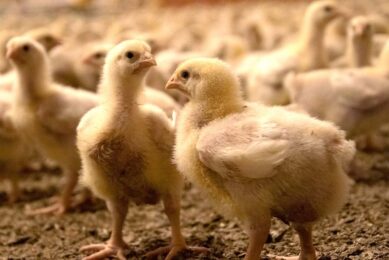Novus technical forum evaluates trace mineral programmes
Novus International held a technical forum at the Landmark Hotel in Bangkok, Thailand earlier this month. The programme “Health through nutrition – evaluating trace mineral programmes” included a number of international and regional Novus speakers as well as presenters from Kasetsart University, Thailand.
Research by Novus International has proven Mintrex chelated trace minerals are more bioavailable than other organic and inorganic mineral forms. This helps producers and nutritionists address key production challenges including gut health, nutrition, structural integrity and protection against oxidative stress, while reducing the environmental deposition of trace minerals from species like poultry.
Keynote speaker, Dr. Jim Richards of Novus presented “Trace mineral bioavailability and functional effects in animals”. He explained to attendees how increasing mineral absorption enhances the amount of minerals available to an animal’s cells and tissues. This, in turn, better supports the thousands of mineral-dependent enzymes and other proteins that do the biochemical work in the animal.
“There has been a great deal of confusion regarding minerals and their effectiveness”, stated Dr. Richards. “One of the main reasons to feed an organic trace mineral (OTM) over an inorganic trace mineral (ITM) is the delivery of more minerals to the blood and tissues of the animal. “It is essential that producers, nutritionists and veterinarians understand that because OTMs use various ligands, not all OTMs accomplish this goal equally”. Mintrex features two molecules of the methionine hydroxy analogue (HMTBa) – the active ingredient in Alimet and MHAfeed supplements – chelating the zinc (Zn), manganese (Mn) or copper (Cu).
The 2:1 HMTBa metal structure found in Mintrex is stable through the relatively low pH of the upper gastrointestinal tract. This stability reduces mineral disassociation and thus minimizes loss to antagonists in the digesta, such as phytate, or other trace or macrominerals. ”Increasing more mineral availability for absorption in the small intestine, allows the producer to reduce inclusion rates – “so less really is more,” Richards explained.
“Additionally, the HMTBa organic ligands are fully available as a methionine source to the animal so when formulating with Mintrex, HMTBa can be entered into the nutritional matrix being calculated.”
Novus’s Global Poultry Market Manager, Dr. Scott Carter presented “Functional benefits and bird performance”. He explained that Mintrex can maintain or even improve performance as measured by the traditional metrics of bodyweight gain, feed conversion ratio (FCR) and mortality. Carter explained that trials and commercial success has supported the additional benefits of Mintrex in other areas of the customer’s value chain like processing. According to research, a supply of highly available trace minerals plays an important role in preventing foot pad lesions, leg problems and skin scratches.
Carter also explained that the use of Mintrex chelated trace minerals at about one quarter of the commercial inclusion rate used for ITMs has significantly improved footpad health for many customers. “Footpad lesions can not only influence producer income, but are also a gateway for bacterial infections – resulting in increased condemnations, risk of E. coli/Campylobacter and food poisoning. Even in live markets where footpads are not sold, foot pad problems can lead to reduced feed intake, slower weight gain and decreased uniformity”.
Dr. Carter added that recent experiments in Brazil have proven greater skin integrity, enhanced gut health and fewer skin abrasions, resulting in a reduction of downtime for processors and fewer downgrades. “Mintrex Zn and Mintrex Cu have both been demonstrated a significant increase for intestinal breaking strength in broilers,” said Carter.
Join 31,000+ subscribers
Subscribe to our newsletter to stay updated about all the need-to-know content in the poultry sector, three times a week.
 Beheer
Beheer








 WP Admin
WP Admin  Bewerk bericht
Bewerk bericht